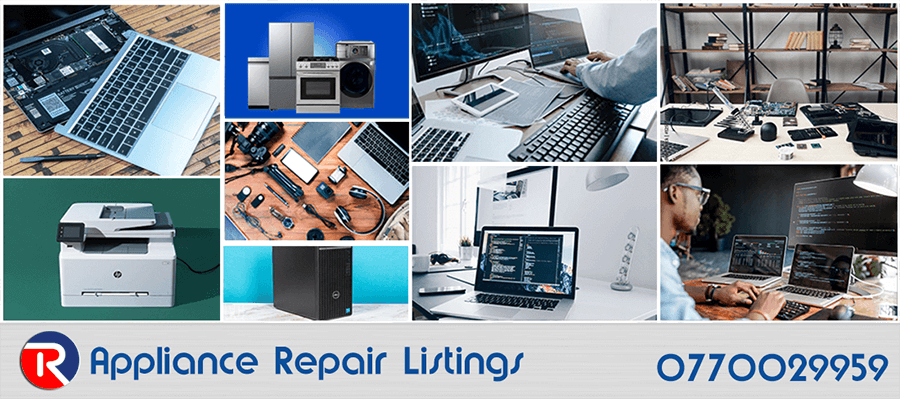
How to Fix a Laptop That Won’t Connect to External Displays
By Repair.co.ke
Connecting a laptop to an external display, such as a monitor or projector, can significantly enhance productivity or presentation or presentation capabilities capabilities, but it’s frustrating when the connection fails to fails. This issue can arise from hardware faults, software misconfigurations, or compatibility problems. In this article, Repair.co.ke provides a comprehensive guide to diagnose and resolve issues preventing your laptop from connecting to external displays, ensuring you can restore functionality efficiently.
Step 1: Verify Physical Connections
The first step is to inspect all physical connections between your laptop and the external display. Ensure the cable (HDMI, VGA, DisplayPort, or USB-C) is securely plugged into both devices. If using an adapter or dock, confirm it’s properly connected. Test the cable with another laptop or monitor to rule out a faulty cable or adapter. Check the ports on both devices for visible damage, such as bent pins or debris, which could obstruct connectivity. If the hardware appears intact, power cycle both the laptop and the external display by turning them off, disconnecting them the cables, and restarting both devices after a minute. This can reset temporary glitches affecting the connection.
Step 2: Check Display Settings
Incorrect display settings are a common cause of connection issues. On Windows, press Windows Key + P to open the display mode menu and select “Extend,” “Duplicate,” or “Second screen only.” On macOS, navigate to System Settings > Displays and click “Detect Displays” to search for the external monitor. Ensure the external display is powered on and set to the correct input source (e.g., HDMI1, DisplayPort). If the laptop still doesn’t detect the display, manually adjust the resolution and refresh rate in the display settings to match the external monitor’s specifications, which can be found in its manual or on the manufacturer’s website.
Step 3: Update Graphics Drivers
Outdated or corrupted graphics drivers can prevent external displays from functioning. To update drivers on Windows, right-click the Start button, select Device Manager, expand Display Adapters, right-click your graphics card, and choose Update driver. Select “Search automatically for drivers” to let Windows find the latest version. On macOS, graphics drivers are updated through system updates, so go to System Settings > General > Software Update to install any available updates. Alternatively, visit the graphics card manufacturer’s website (e.g., NVIDIA, AMD, Intel) to download and install the latest drivers manually. After updating, restart your laptop and attempt to reconnect the external display.
Step 4: Test with Another Display
To isolate the issue, connect your laptop to a different external display. If it works, the original monitor may be faulty or incompatible. Check the original display’s compatibility with your laptop’s graphics card and port type. Some older monitors may not support newer connection standards, such as USB-C or high-resolution outputs. If the laptop fails to connect to any display, the issue likely lies with the laptop’s hardware or software.
Step 5: Troubleshoot Hardware Issues
If software fixes don’t resolve the problem, inspect the laptop’s video output port. A damaged port may require professional repair. If your laptop has multiple ports (e.g., HDMI and USB-C), try a different one. For laptops with dedicated graphics cards, ensure the external display is using the dedicated GPU, as some systems default to integrated graphics, which may not support certain outputs. Access this setting in the graphics card’s control panel (e.g., NVIDIA Control Panel). If you suspect a hardware fault, such as a failing graphics card, contact a professional technician, as internal repairs can be complex.
Step 6: Check for Operating System Issues
In rare cases, operating system glitches can interfere with external display connectivity. On Windows, run the Hardware and Devices Troubleshooter by searching for “troubleshoot” in the Start menu and selecting “Find and fix problems with devices and hardware.” On macOS, reset the System Management Controller (SMC) by shutting down the laptop, holding Control + Option + Shift for 7 seconds, then pressing the power button for another 7 seconds. If issues persist, consider reinstalling the operating system after backing up data, as this can resolve deep-rooted software conflicts.
Step 7: Seek Professional Assistance
If none of the above steps work, the issue may involve advanced hardware or firmware problems, such as a malfunctioning motherboard or corrupted BIOS. Contact a reputable repair service like Repair.co.ke for expert diagnostics and repair. Provide details about the laptop model, operating system, and troubleshooting steps attempted to expedite the process.
A laptop failing to connect to an external display can disrupt productivity, but systematic troubleshooting can often resolve the issue. By checking connections, updating drivers, and testing hardware, you can identify and fix the problem in most cases. For persistent issues, professional assistance from Repair.co.ke ensures your laptop is back to full functionality. Follow these steps to restore seamless connectivity and enhance your computing experience.